DIGLYCIDYL ETHER
- CAS NO.:2238-07-5
- Empirical Formula: C6H10O3
- Molecular Weight: 130.14
- MDL number: MFCD00080479
- EINECS: 218-802-6
- SAFETY DATA SHEET (SDS)
- Update Date: 2025-01-27 09:38:02

What is DIGLYCIDYL ETHER?
Description
Diglycidyl ether is a colorless liquid with astrong, irritating odor. Molecular weight=130.14; Boilingpoint=260℃; Vapor pressure=0.09 mmHg at 25℃;0.21 mmHg at 20℃; Flash point=63.8℃. HazardIdentification (based on NFPA-704 M Rating System):Health 3, Flammability 2, Reactivity 0.
Chemical properties
clear colorless liquid
The Uses of DIGLYCIDYL ETHER
Diglycidyl ether is significant only because it is a possible trace component of epoxy compounds derived from epichlorohydrin.
The Uses of DIGLYCIDYL ETHER
Diluent for epoxy resins; stabilizer of chlorinated organic compounds
General Description
Colorless liquid with a pronounced irritating odor. Used as a reactive dilutent for epoxy resin , as a chemical intermediate, as a stabilizer of chlorinated organic compounds, and as a textile-treating agent.
Air & Water Reactions
Oxidizes readily in air to form unstable peroxides that may explode spontaneously [Bretherick, 1979 p.151-154, 164].
Reactivity Profile
Epoxides, such as DIGLYCIDYL ETHER, are highly reactive. They polymerize in the presence of catalysts or when heated. These polymerization reactions can be violent. Compounds in this group react with acids, bases, and oxidizing and reducing agents. They react, possibly violently with water in the presence of acid and other catalysts.
Health Hazard
DIGLYCIDYL ETHER can cause death or permanent injury via oral and inhalation routes during exposure that comes from normal use. It is incapacitating and poisonous and requires special handling. It can cause considerable discomfort by the dermal route.
Fire Hazard
(Non-Specific -- Poison, Flammable Liquid, n.o.s.) May be ignited by heat, sparks, or flames. Container may explode in heat of fire. Vapor explosion and poison hazard indoors, outdoors or in sewers. Avoid strong oxidizers.
Safety Profile
Suspected carcinogen with experimental tumorigenic data. Poison by ingestion, inhalation, and intravenous routes. Moderately toxic by skin contact. A severe eye and skin irritant. Mutation data reported. Chronic exposure can cause bone marrow depression. When heated to decomposition it emits acrid smoke and fumes. See also ETHERS.
Potential Exposure
Tumorigen,Mutagen. Primary Irritant. This material is used as a reactive diluent for epoxy resins; as a textile treating agent; andas a stabilizer for chlorinated organic compounds.
First aid
If this chemical gets into the eyes, remove anycontact lenses at once and irrigate immediately for at least15 min, occasionally lifting upper and lower lids. Seek medical attention immediately. If this chemical contacts theskin, remove contaminated clothing and wash immediatelywith soap and water. Seek medical attention immediately. Ifthis chemical has been inhaled, remove from exposure,begin rescue breathing (using universal precautions,including resuscitation mask) if breathing has stopped andCPR if heart action has stopped. Transfer promptly to amedical facility. When this chemical has been swallowed,get medical attention. Give large quantities of water andinduce vomiting. Do not make an unconscious personvomit.
Carcinogenicity
In mice, diglycidyl ether has been shown to produce epithelioma following repeated skin application. A total dose of 100 mg produced these tumors in 4 of 20 animals; a dose of 33 mg produced only 1/20 .
storage
Color Code—White: Corrosive or Contact Hazard;Store separately in a corrosion-resistant location. Prior toworking with DGE you should be trained on its proper handling and storage. Diglycidyl ether must be stored to avoidcontact with strong oxidizers, such as chlorine, chlorinedioxide, bromine, nitrates, and permanganates since violentreactions occur. Store in tightly closed containers in a cool,well-ventilated area away from heat. Sources of ignition,such as smoking and open flames, are prohibited wherediglycidyl ether is used, handled, or stored in a manner thatcould create a potential fire or explosion hazard.
Shipping
DGE requires a “CORROSIVE” label. It falls inHazard Class 8(6.1) and Packing Group III.
Incompatibilities
Forms explosive mixture with air. Mayexplode when heated. Contact with strong oxidizers maycause fire and explosions. Ethers, as a class, tend to formperoxides upon contact with air and exposure to light.Attacks some forms of plastics, coatings, and rubber.
Properties of DIGLYCIDYL ETHER
| Boiling point: | 260 °C |
| Density | 1.12 |
| refractive index | 1.446-1.448 |
| Flash point: | 64 °C |
| solubility | Chloroform (Sparingly), Ethyl Acetate (Slightly), Methanol (Sparingly) |
| form | Liquid |
| color | Clear colorless to slightly brown |
| EPA Substance Registry System | Diglycidyl ether (2238-07-5) |
Safety information for DIGLYCIDYL ETHER
| Signal word | Danger |
| Pictogram(s) |
 Corrosion Corrosives GHS05  Skull and Crossbones Acute Toxicity GHS06 |
| GHS Hazard Statements |
H302:Acute toxicity,oral H311:Acute toxicity,dermal H314:Skin corrosion/irritation H330:Acute toxicity,inhalation |
| Precautionary Statement Codes |
P260:Do not breathe dust/fume/gas/mist/vapours/spray. P280:Wear protective gloves/protective clothing/eye protection/face protection. P284:Wear respiratory protection. P310:Immediately call a POISON CENTER or doctor/physician. P305+P351+P338:IF IN EYES: Rinse cautiously with water for several minutes. Remove contact lenses, if present and easy to do. Continuerinsing. |
Computed Descriptors for DIGLYCIDYL ETHER
New Products
Methyl (R)-1-Boc-4,4-difluoropyrrolidine-2-carboxylate 2,2-Difluoropropylamine hydrochloride tert-butyl 3-bromoazetidine-1-carboxylate (R)-1-Boc-3-hydroxypyrrolidine DIFLUOROACETIC ANHYDRIDE 2,2-Difluoropropionic acid Diallylamine, 99% Calcium hydroxide, 95% Aluminum oxide, basic 2-Bromophenylacetonitrile, 97% L-tert-Leucine,97% N-Hydroxy-2-methylpropanimidamide 4-(3,4-Dichlorophenyl)-3,4-Dihydro-N-Methyl-1-(2H)-Naphthalenimine (Schiff Base) 2-AMINO-3,5-DIBROMO BENZALDEHYDE [ADBA] L-Glutamic Acid Dimethyl Ester Hcl 10-Methoxy-5H-dibenz[b,f]azepine 5-Cyanophthalide N, N-Carbonyldiimidazole (CDI) Dibenzoyl Peroxide Titanium Dioxide 2-(Methylthio) Benzonitrile Sodium Acetate Anhydrous Allopurinol 1,5-DibromopentaneRelated products of tetrahydrofuran

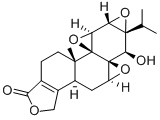
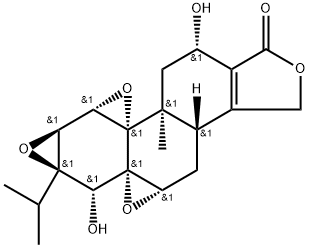
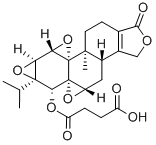
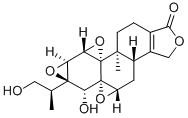
![2,2'-oxybis-6-oxabicyclo[3.1.0]hexane](https://img.chemicalbook.in/CAS/GIF/2386-90-5.gif)

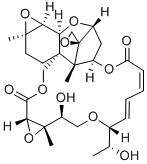
You may like
-
![Cis-2-(Bromomethyl)-2-(2,4-Dichlorophenyl)-1,3-Dioxolane-4-Ylmethyl Benzoate [CBB] 61397-56-6 99%](https://img.chemicalbook.in//Content/image/CP5.jpg) Cis-2-(Bromomethyl)-2-(2,4-Dichlorophenyl)-1,3-Dioxolane-4-Ylmethyl Benzoate [CBB] 61397-56-6 99%View Details
Cis-2-(Bromomethyl)-2-(2,4-Dichlorophenyl)-1,3-Dioxolane-4-Ylmethyl Benzoate [CBB] 61397-56-6 99%View Details
61397-56-6 -
 287930-77-2 / 142569-70-8 99%View Details
287930-77-2 / 142569-70-8 99%View Details
287930-77-2 / 142569-70-8 -
![2033-24-1 2,2-Dimethyl-1,3-Dioxane-4,6-Dione [Meldrum Acid] 98%](https://img.chemicalbook.in//Content/image/CP5.jpg) 2033-24-1 2,2-Dimethyl-1,3-Dioxane-4,6-Dione [Meldrum Acid] 98%View Details
2033-24-1 2,2-Dimethyl-1,3-Dioxane-4,6-Dione [Meldrum Acid] 98%View Details
2033-24-1 -
 Ethyl-2-Chloroacetoacetate 609-15-4View Details
Ethyl-2-Chloroacetoacetate 609-15-4View Details
609-15-4 -
 CIS- BROMO BENZOATEView Details
CIS- BROMO BENZOATEView Details
61397-56-6 -
 609-15-4View Details
609-15-4View Details
609-15-4 -
![1-(6-Methylpyridin-3-Yl)-2-[4-(Methylsulfonyl)Phenyl]Ethanone [Ketosulfone] 99%](https://img.chemicalbook.in//Content/image/CP5.jpg) 1-(6-Methylpyridin-3-Yl)-2-[4-(Methylsulfonyl)Phenyl]Ethanone [Ketosulfone] 99%View Details
1-(6-Methylpyridin-3-Yl)-2-[4-(Methylsulfonyl)Phenyl]Ethanone [Ketosulfone] 99%View Details
221615-75-4 -
 27143-07-3View Details
27143-07-3View Details
27143-07-3
